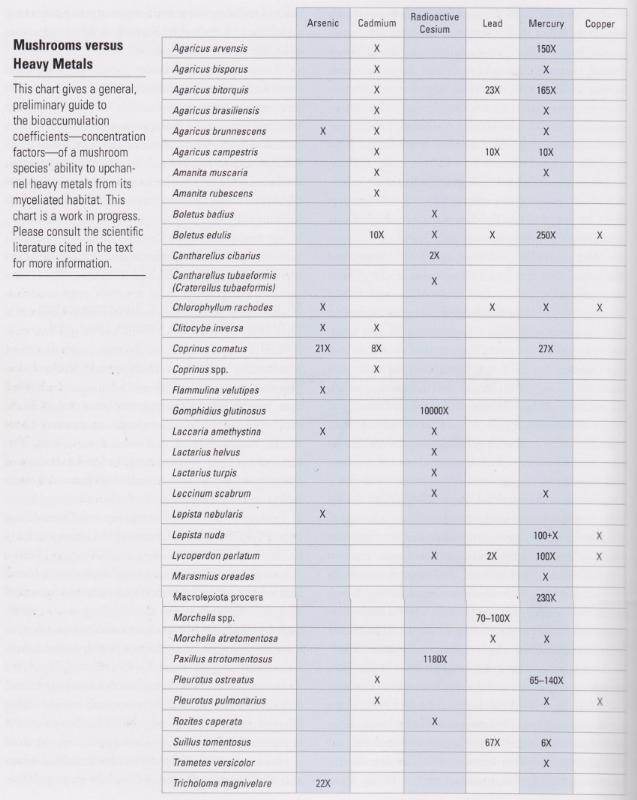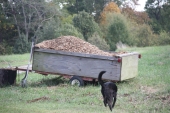
 3
3




 1
1




 5
5




 2
2




 4
4




Miss Mitchell wrote:In the discussion on bioremediation on the "composting contaminated grass clippings" thread, John says this:
"Now, how do you do this on your lawn? Here is a reasonable plan of attack: (1) get a truckload of mulch that contains lots of tannins. Oak leaves would be perfect, what you want to avoid is actual structural wood like pine logs or lumber or wood shavings or newspaper, those things are all cellulose."
My question: how important is it that the leaves in this step have a high tannin level? I'd love to try this, but I don't have access to oak leaves. The rest of your instructions I get, but the tannin part gives me pause.
 2
2









Medicinal herbs, kitchen herbs, perennial edibles and berries: https://mountainherbs.net/ grown in the Blue Mountains, Australia
 1
1




so please take care not to harvest too much.... I only harvest what I eat and try to inoculate the garden with small parts of the stem which I would discard anyway.
I always wonder if mushrooms are so great in sweeping up toxins are they toxic waste after sweeping up? For example they take up a lot of
radiation and it is still not advisable to eat European mushrooms. Or do the mushroom break the heavy metals, radioactive elements and other poisons down?




John Elliott wrote:
Elements are called that because they can't be broken down.
 1
1




Well, they can be, unfortunately, that's where radioactivity comes from.




 2
2




Parker Maynard wrote: why are the few books I've seen on this topic $100+. I've been fascinated with the idea of mycoremediation for years so my instinct has always been to "get the book" but the couple I've found from various sellers are through the roof. Any suggestions for reading material?
Any suggestions on how we could start innoculating a pile and what species we should use to get this research going?
 1
1




Take a bowl of your media and microwave it with water for a good 6 or 8 minutes, enough for it to come to a good boil.
check the food waste that you are adding to the pile. If it has any vegetables that are rotting with liquefaction, like leafy vegetables that turn to green goo between your fingers, those are plant pathogens and you want to sterilize those to get rid of the pathogen. You wouldn't want your compost to spread any of them.




Also, is this microwaving process going to stink pretty bad and piss off/gross out my wife? If I wanted to pasteurize (?) more material than can be done in a bowl in the microwave without getting high-tech could I a) boil the media in a large pot over a fire outside or b) use a pressure cooker and quart mason jars?




there are really only two decomposition pathways for this first step: (1) sunlight, which you mentioned in an earlier post, where the UV rays of the sun can break the bond and toss in an oxygen, which then makes it possible to reenter biochemical pathways and (2) cleavage by some oxidative enzyme excreted by a fungus. You already told of the counterproductive aspects of tilling and tilling and tilling, hoping to expose more soil contamination to UV rays. That's really wiping the slate clean before anyone can think of what kind of permaculture they can try to start.




We have our initial soil tests results but it'll be another 2 months before we have finished compost to test. Penn State can provide this service but I don't know if they are able to test for persistent herbicides. Do you recommend a certain lab?








Logan Simmering wrote:I'm curious, are thre any good examples of field deployment of mycoremediation techniques? Or have attempts at moving beyond the experimental/demostration scale been stymied by the same sort of buracratic resistance that John Elliot mentioned regarding his attempts to help with the BP spill?




John Elliott wrote:
I always wonder if mushrooms are so great in sweeping up toxins are they toxic waste after sweeping up? For example they take up a lot of
radiation and it is still not advisable to eat European mushrooms. Or do the mushroom break the heavy metals, radioactive elements and other poisons down?
Elements are called that because they can't be broken down. Some elements we need (N,P,K) and so we look for these in fertilizers and try to keep them cycling in the environment . Others, like heavy metals, can accumulate to problem levels. At that point, if there is a plant or a fungus that bioaccumulates it, that plant or fungus is going to be toxic.




I wonder about something else: Fungi can break down organic matter like oil. So, what happens, when they grow on areas with high levels of herbicides or other organic toxins, like besides a road? It might well be, that they break these also down and are perfectly edible, just like Paul Stamets' oysters growing on the oil slush.




John Elliott wrote:
What they don't pick up are undigested organic molecules like herbicides and pesticides. Pretty much the only way you are going to find herbicide or pesticide on a mushroom is if it was sprayed after it emerged from the ground.
This would mean, they are still edible - great! How well is this investigated? I can imagine, that it differs between the mushroom species and the various contaminants.
When they don't pick up such molecules from the ground, and most mushrooms grow so fast that there is not much time to deposit a lot on them, even mushrooms from alongside a road or a sprayed field should be ok...




How well is this investigated? I can imagine, that it differs between the mushroom species and the various contaminants.





















diana todd wrote: what if we cannot find or see and fungi on our land? Is it there and I just do not know what I am looking for? Our acreage is in North East Texas bordering the drought areas. It is very dry here ponds are drying up.












Ben Plummer wrote:Paul Stamets has an article in this month's Permaculture Magazine about cleaning up radioactive contamination with mycoremediation.












 So glad I found this place, it'll be very useful to me.
So glad I found this place, it'll be very useful to me.
















Andy Cook wrote: Early last month I led the Biology students on a fieldwork trip to the rainforest of the Western Ghats. The forest was full of shelf mushrooms growing from fallen trees and limbs. We are still in the northeastern monsoon season, so finding some locally shouldn't be to hard. The students would love to be involved.








John this is a little off topic but if I want to speed up the decomposition of some leaf mold can I just pick some local mushrooms and put them in a blender with water and then dump that on my pile of leaves? Is it really that easy to make a fungal inoculate?John Elliott wrote:Had enough rain yet? Here in Augusta, we had just shy of 11" of rain in June; last month we had only 2.25". This is climate change for you, it's not just about the world getting warmer, precipitation patterns are changing. More and longer dry spells, punctuated by a couple weeks of seemingly continual rain.
But on the bright side, mushroom collecting is excellent! I've been out every day for the last three days with my bucket. Boletes and russulas and laccarias, a couple odd Agaricus, Amanitas of all size, shape and color (all with their ring and volvulus to tell you they are poisonous), chanterelles and others trying to fake being a chanterelle. Why is it that the most prized for eating, the red chanterelle, is the smallest one in my bucket?
Well no matter, I'm not going to cook up any of these, I have a different plan in mind. I am adding some biochar and water to the bucket and using an immersion blender to make an inoculation solution. Sometimes I season the soup with a little peat moss or manure tea or potato peels to enrich the media, but I'm still experimenting, looking for the right recipe. All the fruit trees are getting a cup of soup, and the blueberry bushes, and the kiwi vines, and the.....oh what am I rattling on for, it goes on everything.
Mycology is not as developed a science as, say chemistry. Chemists can not only tell you what chemical reaction is occurring, they can go on in detail about concentration effects. Mycologist are still discovering new species of mushroom and are so busy with the descriptive science, that they haven't yet gotten to studying the effects of population, i.e., spore count and mycelial mass. Some studies will report results like "we observed a reduction of pollutant X by Y percent over an incubation period of Z days". Good stuff to know, but the database of X, Y, and Z has a lot of empty spaces waiting to be filled in.
Next time you see a mushroom, pick it up and take it home. Identify it. Find out where it will help in your permaculture. Blend it up to make some inoculation medium and apply it where it will do some good.
"Consider the scrotum."




Adam Buchler wrote: Is it really that easy to make a fungal inoculate?

|
That new kid is a freak. Show him this tiny ad:
The new gardening playing cards kickstarter is now live!
https://www.kickstarter.com/projects/paulwheaton/garden-cards
|




